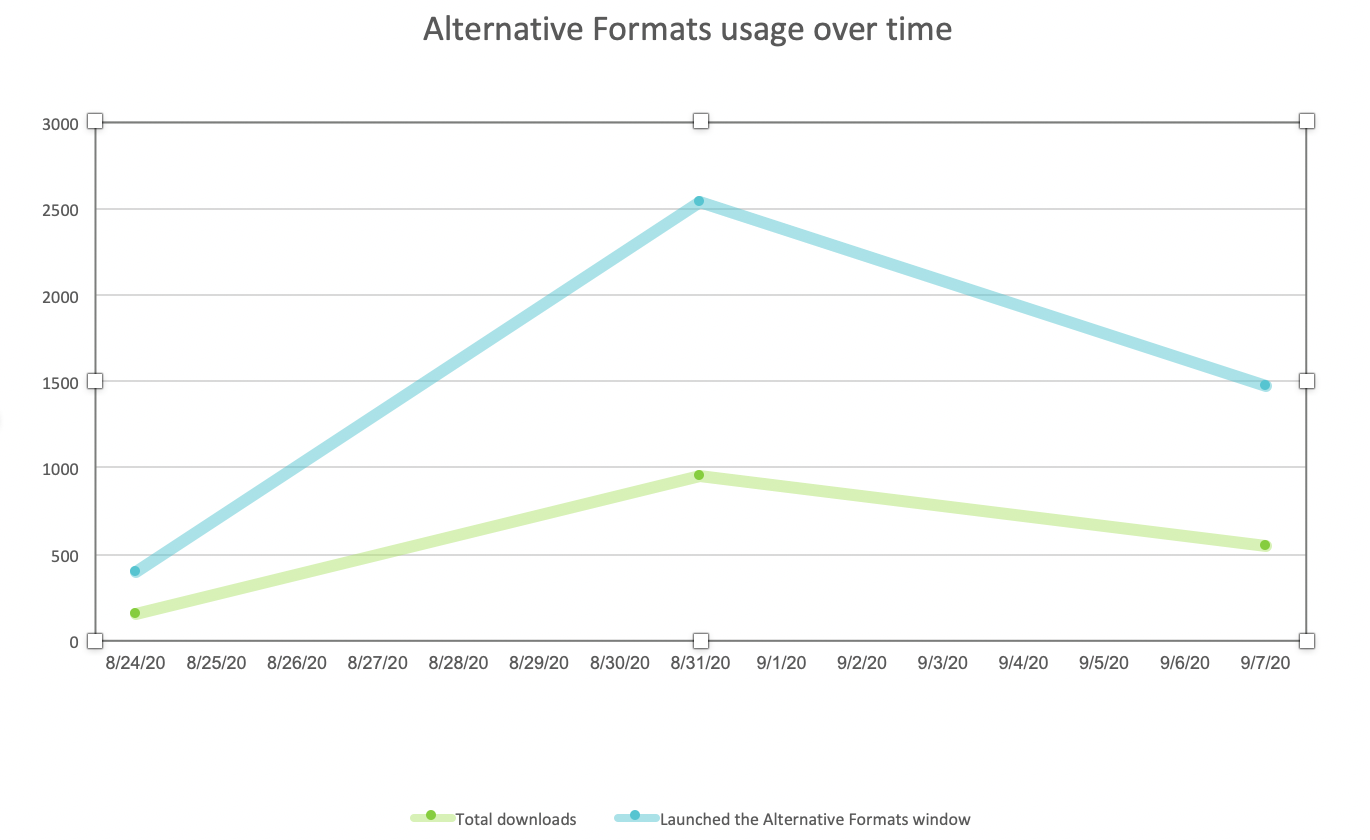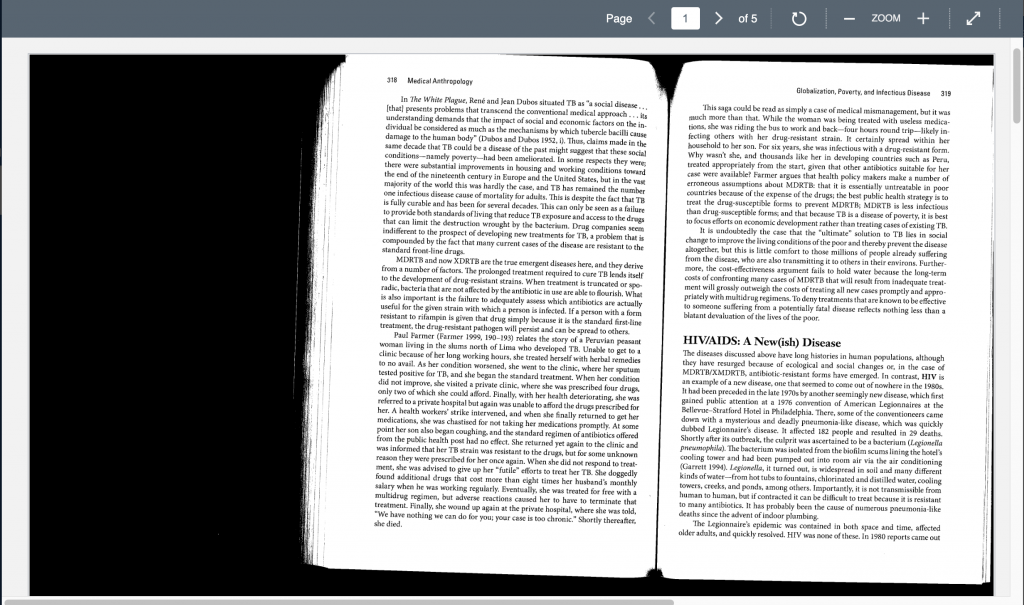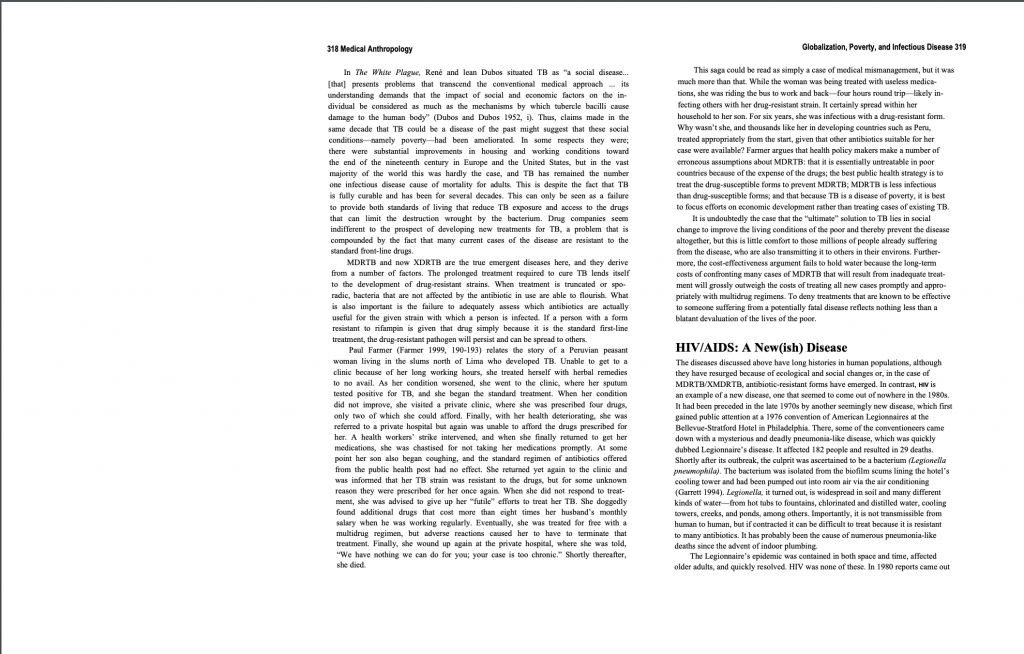When Geneseo’s Canvas added the accessibility program Blackboard Ally in March 2020, a host of new tools became available for both faculty and students. Over the next few weeks, we’ll explore what new powers you have for making course content both more accessible and more useful.
One new item is Alternative Formats, which gives download options without any extra effort on a faculty member’s part. While it’s primarily intended for student use, it offers clear advantages to faculty, as well. And, as you can see, our Canvas users are already putting it to work.
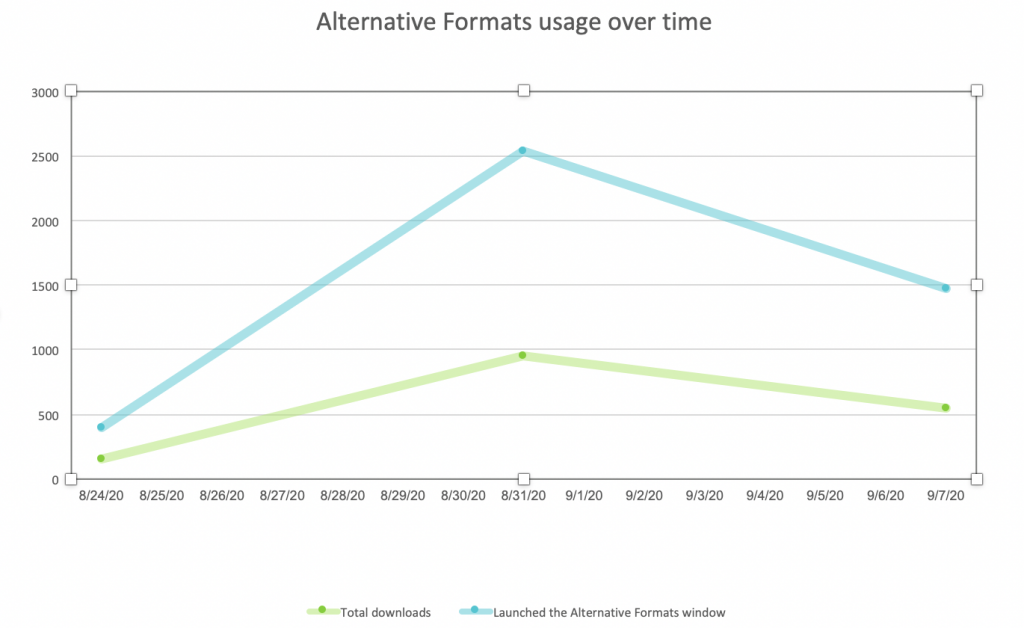
A full review of Alternative Formats can be found here:
- Alternative Formats: Blackboard Ally Instructor Guide
- Alternative Formats: Blackboard Ally Student Guide
The student guide contains a handy chart of what alternative formats are best for specific scenarios, such as accessing while commuting.
Every file an instructor adds to a Canvas course can now be consumed a variety of ways, instantaneously. If you’ve put a PDF in your course, but a student finds it easier to read as an HTML webpage, they can now opt to open it that way (and it becomes more mobile-friendly in the process). Text-based documents can be consumed as audio files; Braille is available to students who require a tactile version.
Big caveat: the quality of the alternative format depends entirely on how well-structured the original version is. An audio version of a syllabus that uses Word styles and headers will be a lot more listener-friendly than a version that uses only bold font to show section changes.
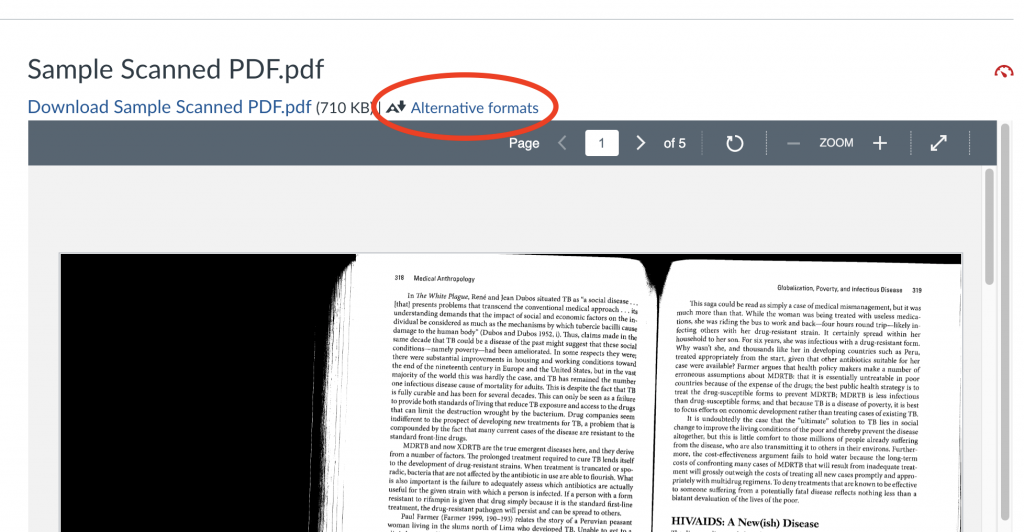
The types of Alternative Formats available to download depend on what the original file type is. Here’s what’s possible with a scanned PDF, as shown in the image above:
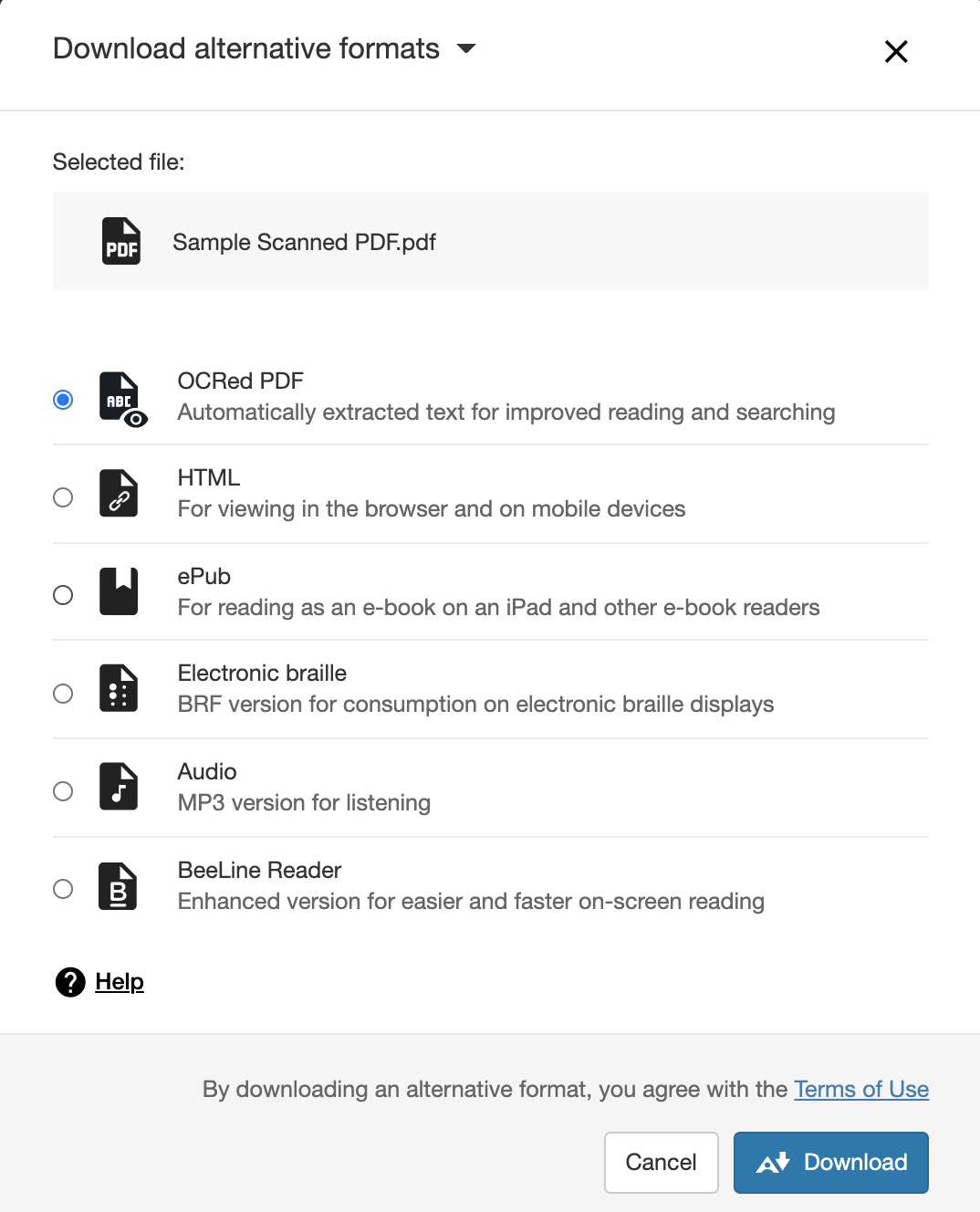
Faculty can make use of Alternative Formats to make their original files easier for everyone to consume. If you have a scanned document you’ve been using for a few years, one that’s difficult to read because it’s crooked or has shadows, this tool can help. Scanned book PDFs are just collections of images, basically photographs of each page. Use the Alternative Formats to download an “OCRed” version of that file. OCR stands for “Optical Character Recognition,” and it transforms those photos of words into machine-readable text. A few odd characters might slip in, but overall the final product tends to be much more readable for every student, and can be shared in place of the original version.
Curious if students are making use of Alternative Formats in your courses? CIT can provide an update of how many Alternative Formats have been downloaded in a given course, upon request.
Contact us at canvas@geneseo.edu if you would like more information about Alternative Formats or other Blackboard Ally accessibility features.

